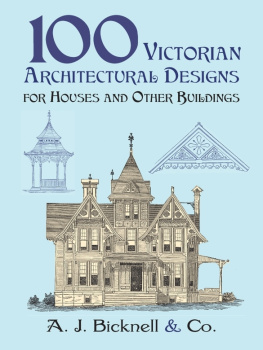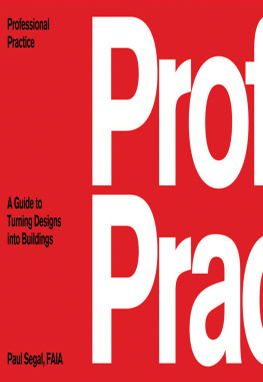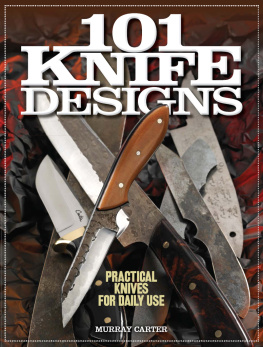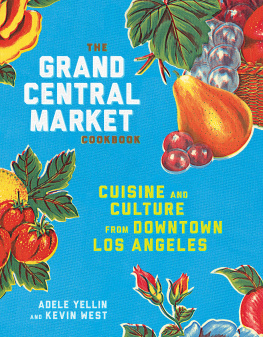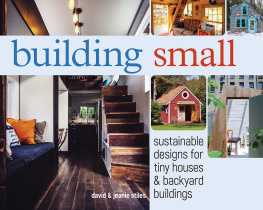
( Edina van der Wyck/Media 10 Images)
This book is dedicated to all those self-builders who have the gumption to risk all and commission adventurous buildings from their architects. For your passion, your determination and your self-belief, I salute you.
CONTENTS
Buildings, if they are to succeed, must be able to receive a great deal of human energy and store it and even repay it with interest.
Charles Moore
Le Corbusier said we all need light, space and order just as we need to eat. He forgot to add white emulsion and bifold doors to his list but otherwise was pretty spot-on in identifying the core architectural attractants for modern man and woman. Philip Johnson, the American architect of skyscrapers, said that All architecture is shelter, all great architecture is the design of space that contains, cuddles, exalts, or stimulates the persons in that space. Architects have wrestled with these ideas for centuries and each generation has sought to express these ideas in a language that responds to a place and a time. Grand Designs has been broadcasting in Britain for 14 years as I write a mere historical blink of an eye but it has charted a change in architectural tastes and ideas over the threshold of a new millennium. Ive seen architects come up with lots of ways to define the word cuddle, some of them involving concrete. Ive certainly visited plenty of exalting homes.
This book, like the television series, celebrates the very best of domestic design. It captures some of the change in the way we view our homes in the early 21st century. It brings together the best of the series and many of the homes that have won Grand Designs Awards. The awards were started in 2003 and have been described as the Oscars of British domestic architecture so it seems fitting to include some of the most luminary projects alongside the better-known broadcast houses. There are several national awards given to homes, not least the Manser Medal awarded by the RIBA, but this volume draws its inspiration from tight within the Grand Designs fold, because the approach of the series, at its core, is about the relationship between a building and the people who built and live in it.
So is it possible, among all these projects, to identify the Big Changes of the last fifteen years or so? Oh yes. It is with the benefit of hindsight and distance. Some of the changes in the built environment have been slow and accretive. We saw the Commission for Architecture and the Built Environment (CABE), the child of Blairs labour government, grow into (generally) a force for good. Planning law acquired yet more detailed legislation and grew into the beast with a thousand tentacles or pages. The law eponymously introduced by environment minister John Gummer in the 1990s (and that resulted in wealthy landowners building questionable faux-Georgian piles in open countryside) was amended into a greener Planning Policy Statement 7 and has now spawned a clutch of sustainable one-off exemplar buildings that are amply supplying Grand Designs with interesting projects.
Architectural taste has also slowly moved in the last decade or two: from white modernist boxes to grey modernist boxes; from riven oak cladding to cedar shingle cladding; from picture Windows to those bifold doors. Space, light and white emulsion are as much in demand as ever on such a small European island stuck in the Atlantic with the highest incidence of low cloud in the Northern Hemisphere. There has also been fast change: the rapid decline of CABE and the pulling of the last of its few teeth by the coalition government; rapidly introduced legislation around housing; the National Planning Policy Framework which in 2012 swept away 65 years of planning policy; the Green Deal for home refurbishment; the Localism Bill and a national drive to promote self-build. When Grand Designs started few people built their home and an infinitesimal number employed an architect. Now it is seen as normal, if still adventurous.
And there has been change which has crept up on us and bitten us on the ankle. Context and contextual design have become mainstream obsessions of the best young practices. Sustainability, once a word nobody understood, can now be used with discretion in our programmes before the nine oclock watershed. The green agenda, where once it was the subject of a specialist eco-build, nowadays runs through almost every project we cover, Im pleased to say.
Meanwhile the spoken language of architecture itself has changed. Once architects began seeing themselves on television, many realised they should ditch the archispeak and enrol in a course in How to Speak Client. The result reflects a big change in the way the profession now models itself as a service industry that wants to understand its clients.
Consequently I didnt want to mark any stylistic or developmental ideas in this book with the usual, arcane, archispeak tags. Terms like Contextual Modernism or Concrete Regionalism are already familiar shorthand for architectural journalists but need detailed explanation in long articles only to be picked to pieces in further long articles. In conversation with my favourite architectural journalist, Isabel Allen, co-author of this volume and ex-editor of Architects Journal (and now my colleague in my housing business, Hab), we dreamed up new, more accessible chapter headings for this book that reflect, if anything, a more anthropological classification of buildings headings that describe and reflect the motives of the people who built the buildings: their owners.
Some things havent changed at all. Mediocre buildings still look mediocre. Misled individuals still massacre old buildings with heavy-handed alterations in the name of restoration. People with more money than braincells still build Toblerone houses on private gated estates that are distinguished by their labyrinthine arrangements of interpenetrating red tiled roofs piled one on top of another. That isnt architecture, its just triangles and lots of maths.
But Grand Designs has shown, repeatedly, another way. A place on the margins of the mainstream where people risk all to experiment with technology, architecture and their own lifestyle, all for our entertainment and awe. We showcased eco lifestyles based only upon coppiced wood and dog lick. We have also promoted craftsmanship in a big way. We have held a mirror up to the world of building and home-making and have gently enquired what those ideas mean; we have reflected a taste of the times, and, in a modest way, influenced the taste and ideas of the times. Not many television programmes have been able to do that.

Space, light and white emulsion are as much in demand as ever on such a small European island stuck in the Atlantic with the highest incidence of low cloud in the Northern Hemisphere. () ( Wilkinson King Architects)

The green agenda used to be the subject of specialist eco-builds, but nowadays is a feature of almost every project we cover.




